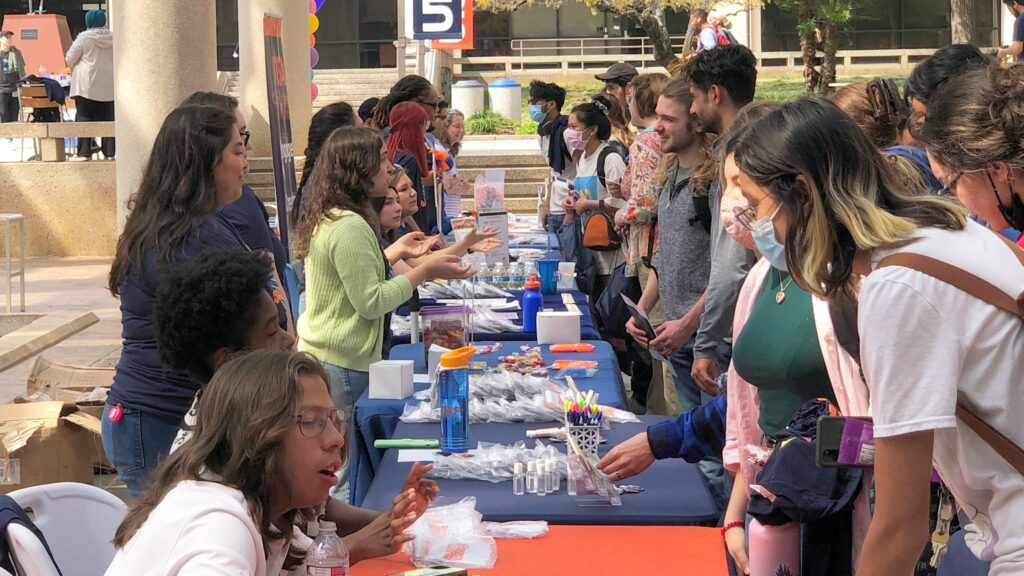
Credit: Ashley Hopkinson/EdSource
In 2014, the California State Board of Education adopted the evidence-based and standards-driven English Language Arts/English Language Development Framework (ELA/ELD Framework) — nonbinding guidance that encourages the implementation of a research-informed, comprehensive literacy approach for all students.
The framework was the first in the nation to integrate two sets of standards: English language arts (grade-level literacy for all students) and English language development (progress in learning English for students from different language backgrounds), with a focus on the needs of English learners.
Amid ongoing discussions about how to best teach literacy to English learners, it is critically important to both demonstrate the significance of the ELA/ELD Framework and to renew calls to fully fund and implement this crucial guidance.
We cannot overlook the fact that the framework has never received the necessary funding for district, school and classroom implementation. Lawmakers appropriated $85 million to provide professional learning and support family engagement in mathematics, science and computer science — recognizing the need for support to accompany mathematics and science framework implementation. Without similar funding for English instructional materials, professional development, coaching and support services, the framework will remain nothing more than a collection of good ideas.
A few districts in the state have taken it upon themselves to focus on professional development and instruction on the tenets of the framework. Norma Carvajal Camacho, assistant superintendent of educational services for the Azusa Unified School District, said it has been transformative for their students: “By integrating primary language instruction and ensuring effective designated and integrated ELD, we have created a more inclusive and dynamic learning environment, resulting in significant improvements in language proficiency and overall achievement for our English learners.”
Unfortunately, without funding to back its implementation, most districts have not been able to adopt the framework’s powerful strategies for improving literacy for all students. This lack of funding means many districts are not providing the necessary professional development for teachers, not investing in high-quality instructional materials, and not offering sufficient coaching and support services. As a result, the framework’s potential to improve literacy outcomes remains unrealized in most areas.
The framework should be the cornerstone of any statewide strategy aimed at improving literacy and reading. It centers literacy and seeks to develop fluency, decoding, comprehension and vocabulary. It also takes into account that knowledge about the world, including the aforementioned skills, comes from reading and writing about meaningful and engaging content.
Imagine a classroom where the students don’t just learn reading and writing in isolation, but connect these skills with other content areas. An integrated approach promotes learning environments where students can read, write and discuss scientific experiments, historical events, or even create stories based on what they’ve learned in math. This is an approach in which students are also immersed in reading entire books. The framework uplifts this integrated approach to literacy and language instruction, delineating literacy expectations from transitional kindergarten to 12th grade. It emphasizes the five research-based cross-cutting themes that encompass all facets of the “science of reading”:
- Foundational skills: Acknowledges the significance of phonics (the ability to recognize written letters from spoken language), phonemic awareness (the ability to identify individual sounds), and fluency as essential building blocks of literacy.
- Meaning making: Encourages critical thinking and comprehension by emphasizing reading, writing, listening, language, motivation and vocabulary development.
- Language development: Focuses on nurturing oral and written language skills to express information, ideas, perspectives and questions effectively.
- Effective expression: Promotes various modes of communication, such as writing, discussions and presentations to showcase students’ understanding and knowledge.
- Content knowledge: Highlights the interconnectedness of content, language and literacy, emphasizing the importance of knowledge about the natural and social world in enhancing text comprehension.
No single element, on its own, makes for a sound approach to reading or literacy — they interdependently bolster one another. Integrating all of these elements, ensuring a coherent and aligned approach over time, and supporting instruction that is responsive to students’ needs will produce better results for English learners and all students.
In California, where students speak more than 140 different languages at home, the framework recognizes the value of cultural diversity, multilingualism and biliteracy as assets to be nurtured and celebrated. The framework also includes a call for all educators to ensure English learners are provided with both integrated and designated English language development instruction.
Without designated instruction for English learners that helps them understand how English works and provides extra practice in speaking and reading, most aspects of learning to read in English become especially challenging. It becomes a struggle to hear and isolate the sounds of English, a challenge to understand the syntax and structure of text, and it becomes increasingly difficult to comprehend and make meaning of vocabulary in a language they haven’t learned.
Included in the framework is guidance for curriculum and instructional planning that is aligned with the standards for integrated English language development occurring throughout the school day in every subject area for every English learner. Our instruction should be responsive to the linguistic demands English learners are facing throughout the curriculum.
There are other efforts underway that are aligned to the ELA/ELD Framework. The Literacy Roadmap, for instance, will help educators apply the framework to classroom instruction and navigate the resources and professional development opportunities available to implement effective literacy instruction. The Literacy Standard and Teaching Performance Expectations for Preliminary Multiple Subject and Single Subject Credentials for teacher candidates are also aligned to the ELA/ELD Framework. These efforts are essential for addressing equity and improving outcomes for all students. Both initiatives will require significant efforts to support teachers, parents and administrators to ensure high-quality literacy instruction.
Our students and teachers need and deserve a significant investment to fully realize the potential of the ELA/ELD Framework. Doing so is necessary for improving literacy outcomes for California’s 1.1 million English learners and all of California’s students. We are ready to work with policymakers to prioritize funding and support its full implementation.
•••
Martha Hernandez is executive director of Californians Together, a statewide advocacy coalition seeking to better educate English learners by improving California’s schools and promoting equitable educational policy.
The opinions in this commentary are those of the author. We welcome guest commentaries with diverse points of view. If you would like to submit a commentary, please review our guidelines and contact us.








